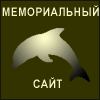| |
of Chicago Press.
* Lakoff, G. and Johnson, M. (1999) Philosophy in the Flesh: The Embodied Mind
and its Challenge to Western Thought. New York: Basic Books.
* Libbrecht, K. (1994) 'The Body and Psychoanalysis: Lacan's Theorisations on
the ‘Notion of the Body' Analysis 5: 7–17 .
* Maclagan, D. (2001) Psychological Aesthetics: Painting, Feeling and Making
Sense. London: Jessica Kingsley.
* McNiff, S. (1992) Art as Medicine: Creating a Therapy of the Imagination.
Boston: Shambhala.
* McNiff, S. (2000) Art Based Research. London: Jessica Kingsley Publishers.
* Michaels, A. (1997) Fugitive Pieces. London: Bloomsbury Publishing.
* Morley, S. (1999) ‘The Painted Word' In: Contemporary Visual Arts, 23: 22–28.
* NIGAT (Northern Ireland Group for Art as Therapy) (2001) ‘9th Art-Therapy
Summer School, University of Ulster”, Belfast. Participant Responses from ‘Art
Moves: Exploring Movement, Improvisation and Bodily Sensation in Art Therapy.
* Novack, C. (1990) Sharing the Dance: Contact Improvisation and American
Culture. Madison:The University of Wisconsin Press.
* Oliver, K. (1993) Reading Kristeva: Unravelling the Double Bind. Indiana
University Press.
* Phelan, P. (1993) Unmarked: The Politics of Performance. London: Routledge.
* Phelan, P. (1997) Mourning Sex: Performing Public Memories. London: Routledge.
* Schaverien, J. (1992) The Revealing Image: Analytical Art Psychotherapy in
Theory and Practice. London: Routledge.
* Schwarz, R. (1993) ‘Space, Movement and Meaning’ in Contact Quarterly
(Summer-Fall): 42–52.
* Smith, N. S. (2000) ‘Taking No for and Answer’ in Tufnell, M. and Crickmay, C.
(eds.) Body, Space, Images: Notes Towards Improvisation and Performance.
London: Virago.
* Sylvester, D. (1999) Interviews with Francis Bacon. London: Thames and Hudson.
* Thomas, D.(2000) Introducation to Hakomi Integrative Somatics Workshop’
Dublin, lrerand: The1vlarino Institute.
* Tufnell, M. (2000) ‘Beneath Our Words,’ in Greenland, Penny (ed.) What
Dancers do that other Health Workers Don’t... Leeds, UK: JABADAO Centre for
Movement Studies: 9–29.
* Weiss, G. (1999) Body Images: Embodiment as Intercorporeality. London:
Routledge
* Whitehouse, M. (1995) The Tao of the Body, ‘ in Johnson, Don Hanlon (ed.)
Bone, ^reaWrtSesture: Practices of Embodiment. San Francisco: California
Institute of Integral Studies: 239–253.
Сведения об авторе:
Памела Уайтекер — сертифицированный арт-терапевт, работала в качестве
арт-терапевта в психиатрических, социальных и образовательных учреждениях
Ирландии, Малайзии и Канады; в настоящее время — докторант центра
психотерапевтических исследований при Университете Шеффилда.
Взято из книги: Арт-терапия в эпоху постмодерна / Под ред. А. И. Копытина. –
СПб.: Речь, Семантика-С, 2002. – С. 85 – 104.
??
??
??
??
www.psy-trening.com
|
|


